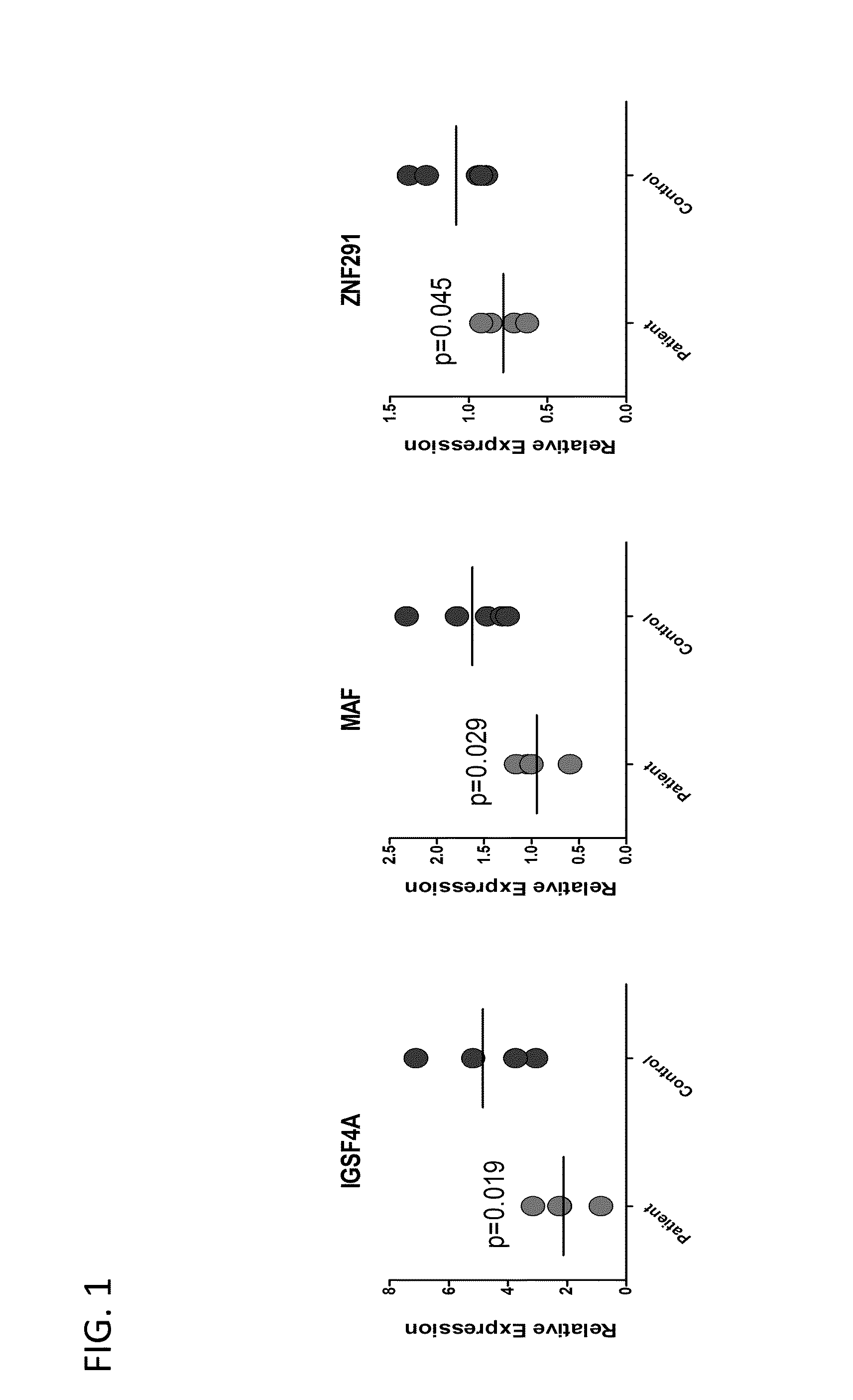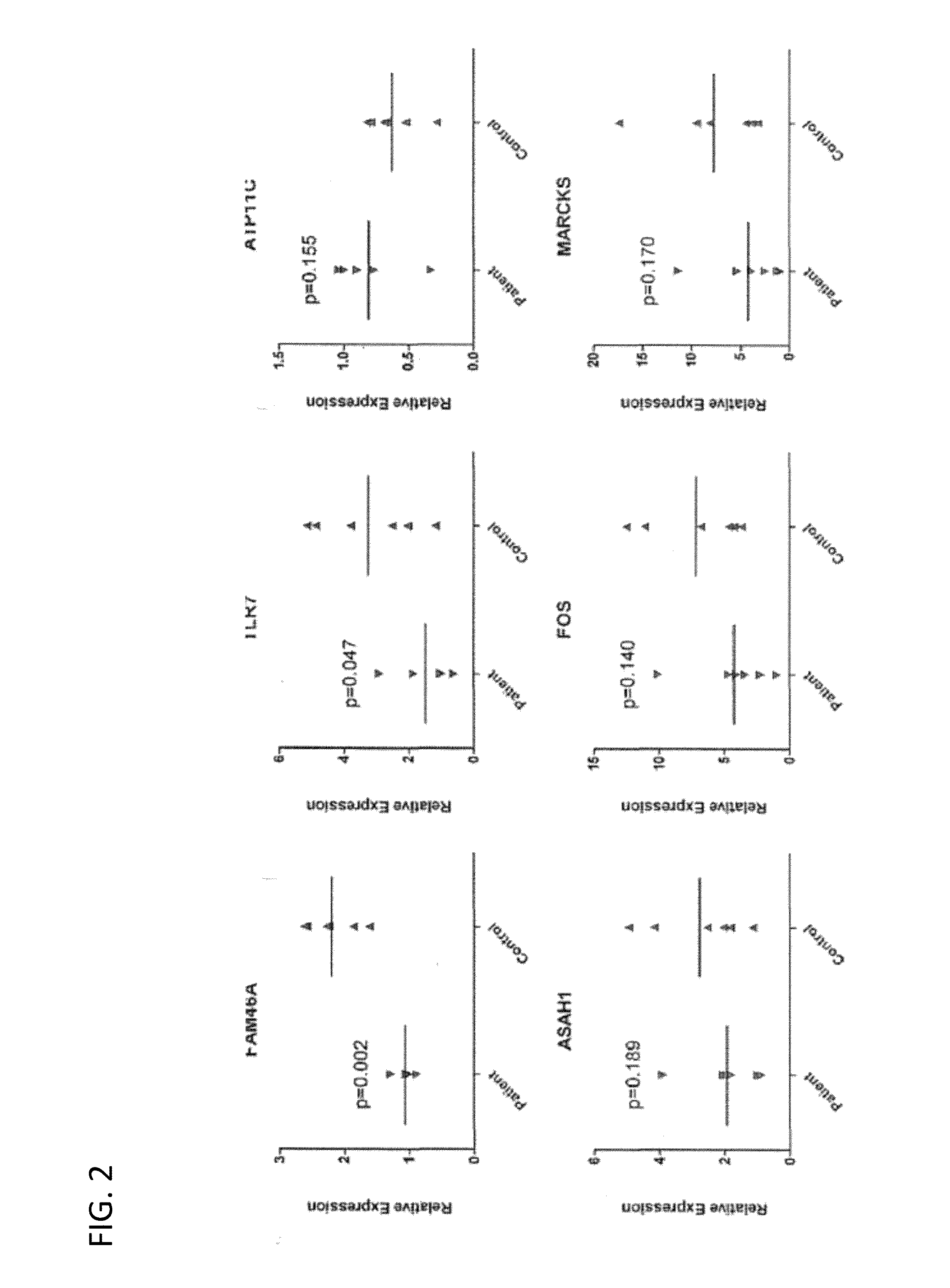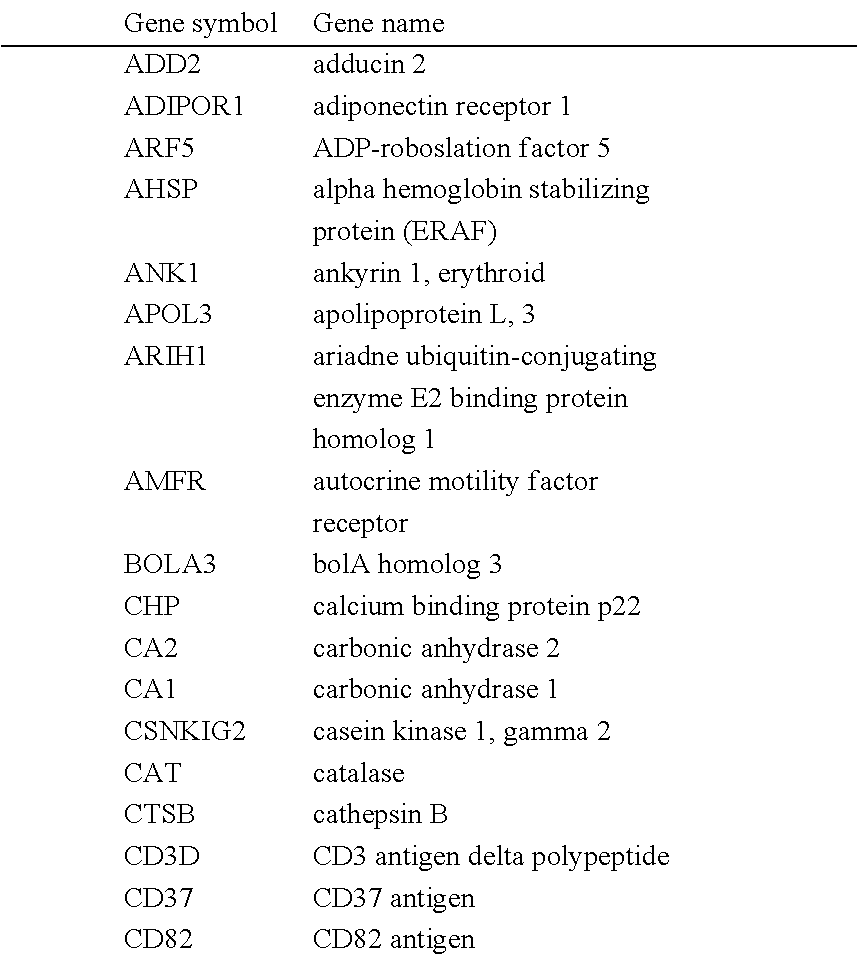Methods for detection of depressive disorders
a technology for depressive disorders and detection methods, applied in the field of detection or diagnosis of depressive disorders, can solve the problems of low detection rate of depressive disorders, poor prognosis of sub-groups, and high levels of adult affective disorders, and achieve the effect of identifying the risk of depressive disorders
- Summary
- Abstract
- Description
- Claims
- Application Information
AI Technical Summary
Benefits of technology
Problems solved by technology
Method used
Image
Examples
example 1
Identification of MDD Biomarkers
[0047]Experiments were conducted during the development of embodiments of the invention to identify biomarkers of MDD through genome-wide expression analysis in the blood and relevant brain regions of animal models of MDD developed from a well-accepted genetic animal model of depression, the Wistar Kyoto (WKY) rat strain. Two sub-strains were developed from the WKY strain that show opposite behavior in behavioral tests used to measure depression. The WKY More Immobile (WMI) line is more depressed while the WKY Less Immobile (WLI) line is less depressed. Since these sub-strains were developed from an inbred line, their genetic variability is very small, thereby indicating that expression differences in their brain and blood are related to the behavioral differences between them.
[0048]AFFYMETRIX microarray profiling of gene expression patterns, using the Rat 230v2 AFFYMETRIX GENECHIP arrays, were carried out in the frontal cortex, amygdale, hippocampus,...
example 2
Biomarkers of Chronic Stress States
[0049]During development of embodiments of the present invention, chronic-stress experiments were conducted utilizing four phylogenetically, physiologically and behaviorally different strains of rats to identify chronic stress-related peripheral biomarkers. Genetic polymorphisms between the strains ranged from 25.9% to 66%, representing a substantial inter-strain variation that is aimed to mimic individual variation among the human subjects. Blood transcripts with the largest fold changes in response to chronic stress across all four strains were identified as chronic stress markers.
[0050]For the isolation of the chronic stress markers, whole blood were collected into PAXgene Blood RNA tubes from non-stressed and chronically stressed Fisher-344 (F344), Brown Norway (BN-SS), Lewis (Lew), and Wistar Kyoto (WKY) male rats. Blood microarray analyses were carried out using the Illumina Sentrix® Rat (Ref-12) Expression BeadChip, version 1.0, release 1. T...
example 3
Identification of Adolescent MDD Biomarkers
[0051]Experiments were conducted during the development of embodiments of the invention to identify biomarkers for MDD in adolescent human subjects.
[0052]Males and females, 15-18 years of age, were recruited through other research studies at the Research Institute at Nationwide Children's Hospital (RINCH), the Nationwide Children's Hospital (NCH) Adolescent Medicine Clinic, NCH Behavioral Medicine Clinic, and community flyers (Table 3). Subjects were recruited into either an MDD or No Disorder (ND) group, based on results from a youth and a parent full, standardized, structured psychiatric interview. Exclusion criterion for the MDD group included: younger or older than 15-18 years; major medical illness; antidepressant use; bipolar disorder; psychosis; pregnancy; mental retardation. Additional exclusion criterion for the No Disorder (ND) group was any lifetime psychiatric disorder.
TABLE 3Adolescent Project Sample CharacteristicsGen-AgeRaceD...
PUM
| Property | Measurement | Unit |
|---|---|---|
| depressive disorders | aaaaa | aaaaa |
| nucleic acid | aaaaa | aaaaa |
| disorders | aaaaa | aaaaa |
Abstract
Description
Claims
Application Information
 Login to View More
Login to View More - R&D
- Intellectual Property
- Life Sciences
- Materials
- Tech Scout
- Unparalleled Data Quality
- Higher Quality Content
- 60% Fewer Hallucinations
Browse by: Latest US Patents, China's latest patents, Technical Efficacy Thesaurus, Application Domain, Technology Topic, Popular Technical Reports.
© 2025 PatSnap. All rights reserved.Legal|Privacy policy|Modern Slavery Act Transparency Statement|Sitemap|About US| Contact US: help@patsnap.com



